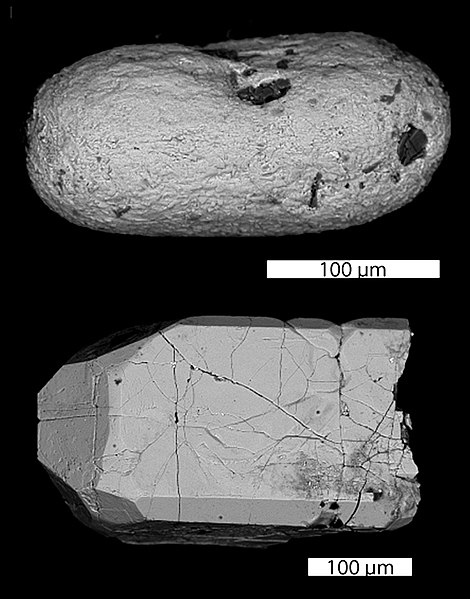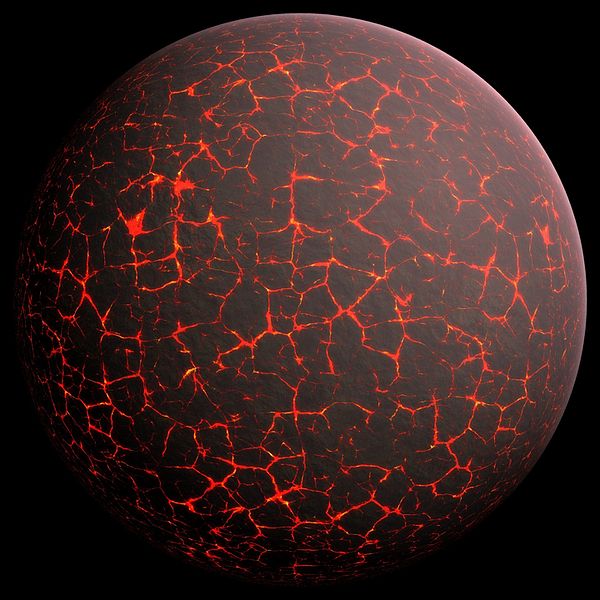The Hadean is the first and oldest of the four known geologic eons of Earth's history, starting with the planet's formation about 4.54 Bya, now defined as Mya set by the age of the oldest solid material in the Solar System found in some meteorites about 4.567 billion years old. The interplanetary collision that created the Moon occurred early in this eon. The Hadean ended 4.031 billion years ago and was succeeded by the Archean eon, with the Late Heavy Bombardment hypothesized to have occurred at the Hadean-Archean boundary.
Backscatter electron micrograph of detrital zircons from the Hadean (4.404 ± 0.008 Ga) metasediments of the Jack Hills, Narryer Gneiss Terrane, Western Australia
The history of Earth concerns the development of planet Earth from its formation to the present day. Nearly all branches of natural science have contributed to understanding of the main events of Earth's past, characterized by constant geological change and biological evolution.
An artist's rendering of a protoplanetary disk
Artist's conception of Hadean Eon Earth, when it was much hotter and inhospitable to all forms of life.
Artist's impression of the enormous collision that probably formed the Moon
The pale orange dot, an artist's impression of the early Earth which might have appeared orange through its hazy methane rich prebiotic second atmosphere. Earth's atmosphere at this stage was somewhat comparable to today's atmosphere of Titan.





